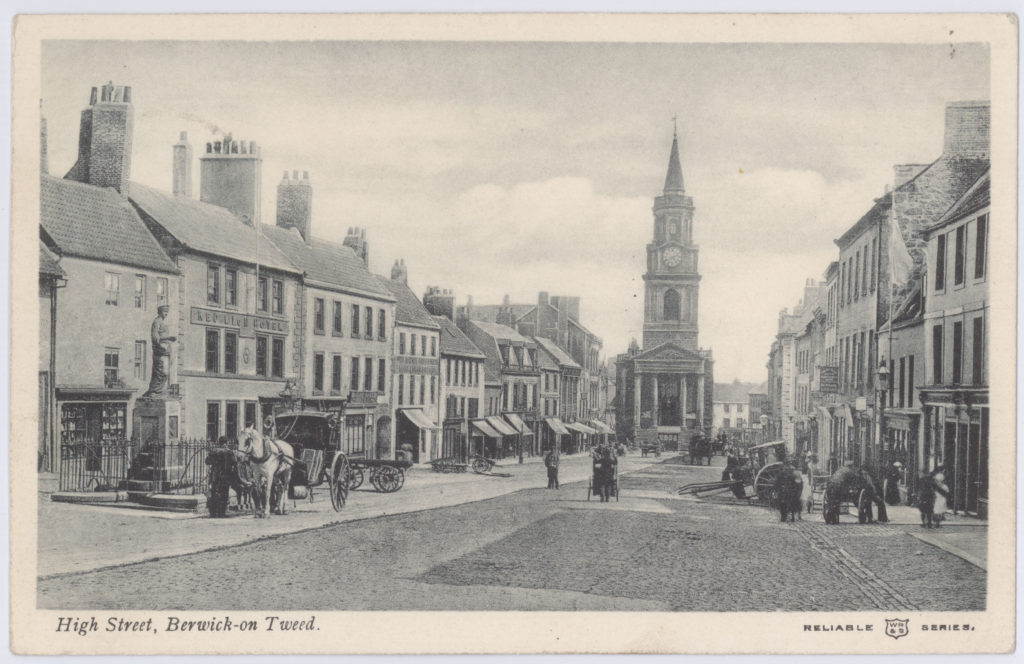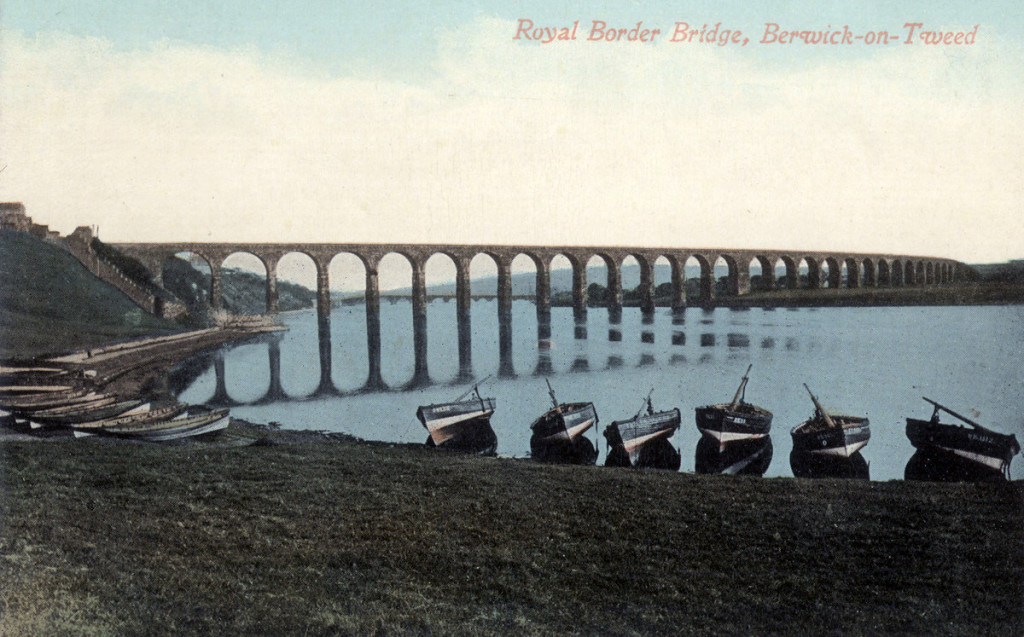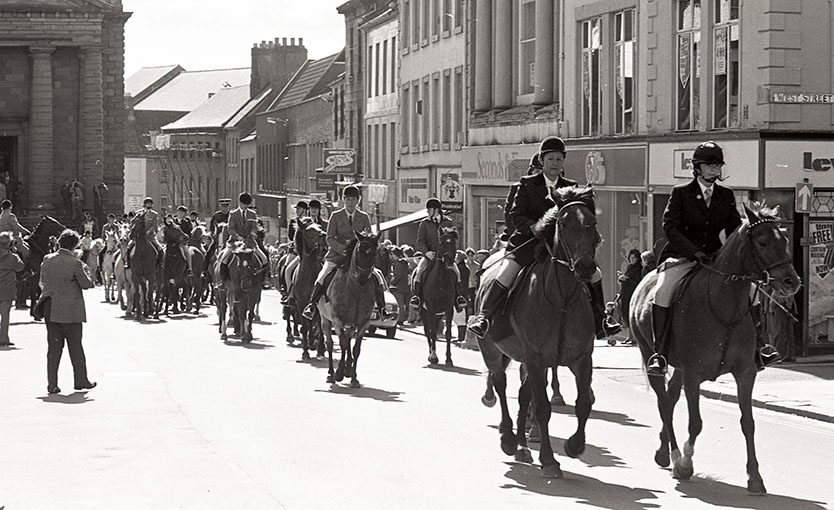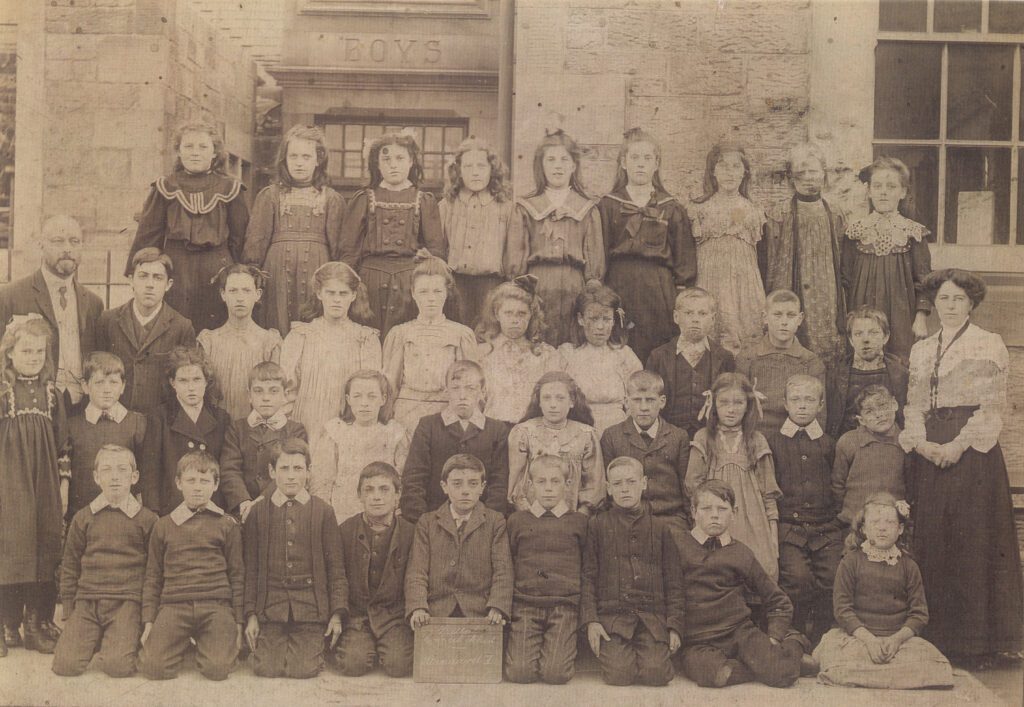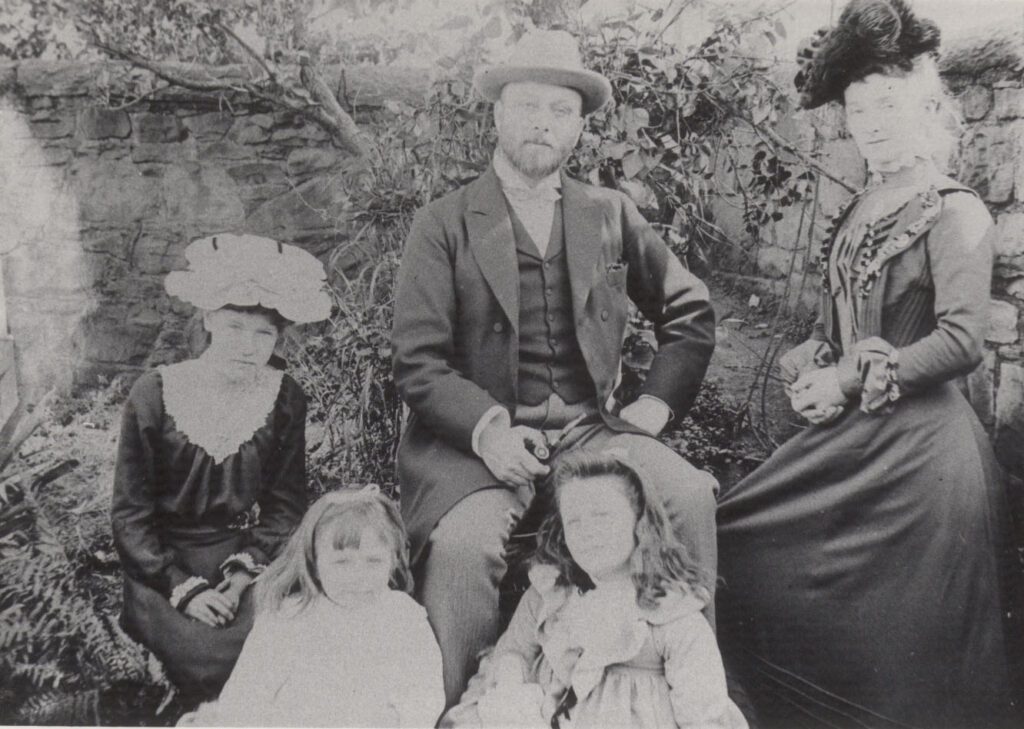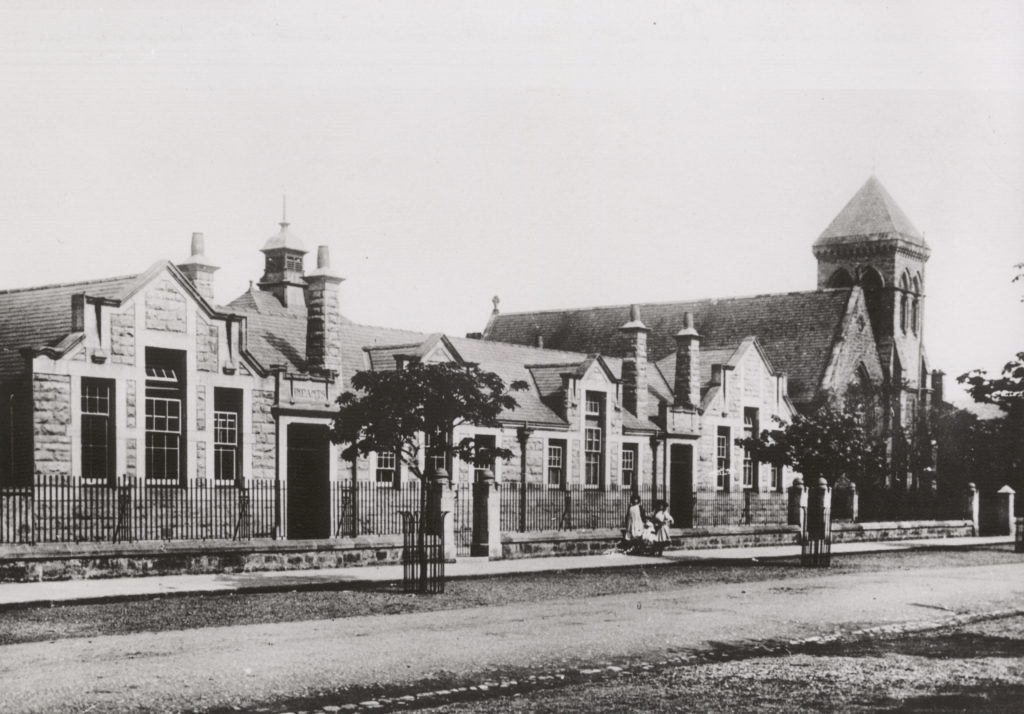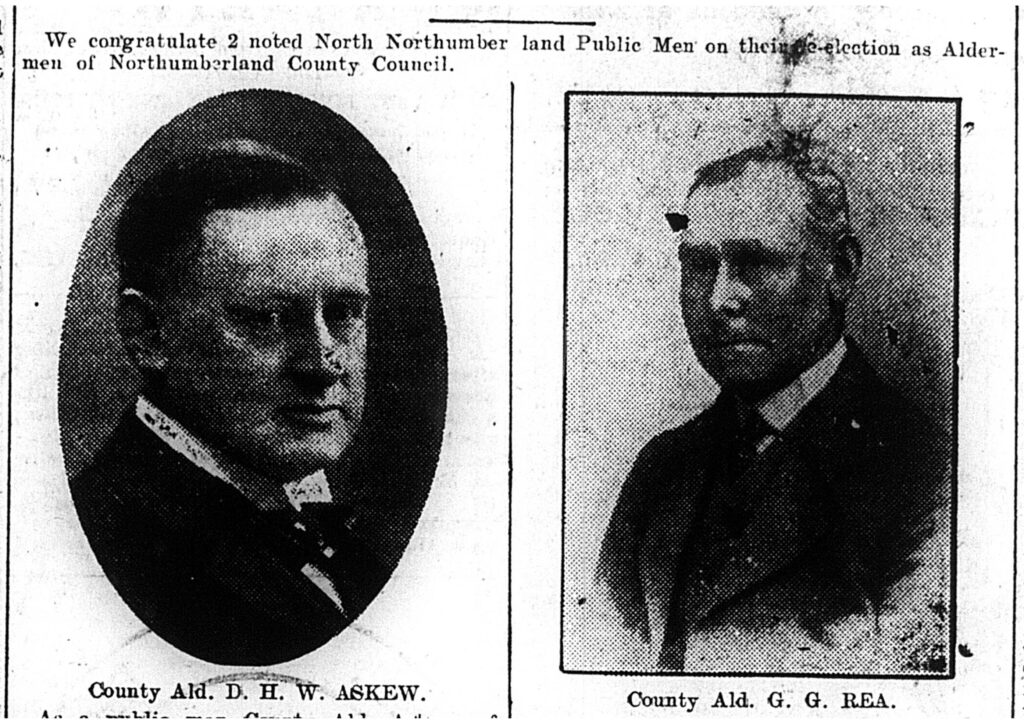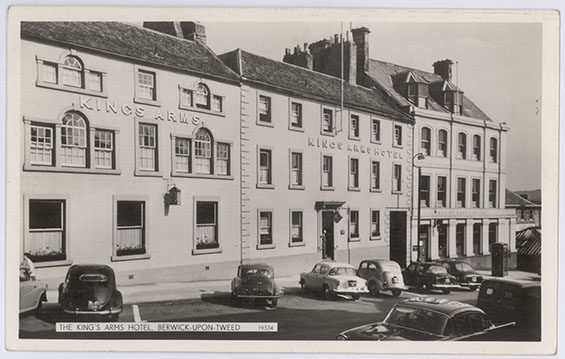MEMORIES OF AN OLD BERWICK BELL RINGER
“Ring a ding dong”! It is about 45 years ago since Mr. Joseph Redfearn, Wallace Green, Berwick, first began to toll the bells in Berwick Townhall, and he is the last of those old Bell Ringers. Mr. Thos. Statham was the Master bell ringer in those days. Tom Statham died several years ago after a long and worthy career as a Corporation Official. The other Town bell ringers when Mr. Redfearn began were Elias Weatherburn, the late Ald. Turnbull, Jas. Unthank, Geo. Weatherburn, John Moor, who had an ironmongery business in Hide Hill, and has been in London now for many years, William Strangeways, Mr. Redfearn and Mr. Statham, a ring of 8 bells. There was no teacher, and they were not members of a Society of Bellringers. They rang the same old round, with a variation that was known as the Queen’s change. They worked by figures in the old days, and from the common ring of 1, 2, 3, 4, 5 ,6 7, 8, they would turn to the Queen’s change, which was 1, 3, 5, 7, 2, 4, 6, 8, and then back to the common ring again. They rang half hour peals at 8am, 10am, 12 noon, 3pm, and 6pm. They rang for the Battle of Waterloo, Queen Victoria’s Birthday and Ascension Day, Christmas Day and New Year’s Day and Berwick Fair. Mr. Redfearn rang his last peal on New Year’s Day.
Mr Redfearn came to Berwick from Newcastle his birthplace, the year after the Royal Border Bridge was opened – over 75 years ago- and his memories of the old town are quaint indeed. Berwick was wretched place in those days. The soldiers would not let one into Wallace Green; they had sentries on guard at both top and bottom. The soldiers of that day were often rough and tumble lot, and the people in the Town had some stirring times. Police Force in those days comprised a Supt., a Constable and a special constable. At harvest time Irish harvesters used to come to town in trucks with scarce a “duddy” on them. Reaping machines wee not in use then. When the Irishmen got tipsy and began a hullaballoo, old Proudfoot, the solitary constable, was the only one that could quieten them.
The granaries were in full swing then; and Castle Terrace was unknown. There were only 2 houses there. One, which is now occupied by Miss Pearson, was owned at that time by Capt. Smith of the old Volunteers. At one time there was no less than 3 public houses in Wallace Green, where Wallace Green Church now stands. Public houses were numerous then, but many of them have been done away with.
Mr. Redfearn served his time as a cabinetmaker with Mr. Patterson, Berwick, and afterwards worked for Mr. Robt. Wood. His last master was Mr. Brown, Castlegate. After Mr. Brown died, he was in several places his last being with Mr. Goodall, in West Street. Mr Redfearn married Margaret Yeoman in 1868 in Berwick Parish Church, the then Vicar Rowe, officiating. They have had a family of 11, 7 of whom are still living. Mr. Redfearn’s son is Managing Director of Redfearns’ Garage in Golden Square. Mr. Redfearn has always had great love for music and was in 3 bands in Berwick. In 1860 he joined the Volunteer Band. He was in Mechanic’s Band when it was organised over 40 years ago. (He played the trombone), it amalgamated with the Volunteers after being in existence for about 14 years. He played in Artillery band, 1st in Fife and Drum Band and then in Brass Band. He played in a string band when he was 10 years of age. He was a member of a noted string band that played at all the dances in the surrounding district, at Ayton, Duns, Coldstream, Milne Graden, Paxton House and in the Scottish Border villages especially. He was an adept on the piccolo and very skillful with it. The other members of the band were Coun. Campbell’s father who played the bass fiddle, John Hogg, who died a few years ago in South Africa, was the 1st fiddle, Mr. Anderson was 2nd fiddle, and Mr. Ford and Mr. Bock played the cornet. Mr. Redfearn is the only survivor of that orchestra, but today he remembers the happy times they had. Until a few years ago, he continued to play the piccolo, at which he was a master hand. Mr Redfearm and his guid wife are still hale and hearty. He is rather deaf now, but if there is anything he regrets he has to relinquish it is the bell-ringing. He is only sorry the Berwick Bellringers were not trained to lay the bells in a proper way, when they could have rendered the chimes as they are done in other towns.
We hope our very old friend “Joe” Redfearn may enjoy many years of retirement in the good old town, which he loves so well, and where he has been such a useful citizen throughout a long and valued life.
SCOTTISH SCOUT WEEK
BERWICK SCOUTS’ DISPLAY
This being Scout Week, a special effort was made to augment the funds of the Berwick Association, by a 2d annual display by the Boy Scouts of Berwick, Tweedmouth and Spittal, on Tuesday night in the Flagstaff Park, Berwick. There was a record attendance, every vantage point being crowded. There was a very long programme, which lasted over 1 ½ hours, but during this time not a dull moment was experienced. The Scouts who were formed up at their headquarters, were headed by Berwick Pipe band, and marched in procession form there along Silver Street, up Hide Hill, High Street, Walkergate Lane, Parade, and thence to the Park. S. M. Parkes was in the enclosure ready to welcome them; after which they formed a circle and rallied round the Commissioner. Thereafter the flag was hoisted, and cheers resounded again and again. National Anthem was next sung, in a hearty manner by all. The programme now began in real earnest and went with a swing the whole time.
4 boxing bouts were next witnessed, the first being between Troop Leaders Johnston and Gleig. This was the most exciting of all, they really seemed to mean business and gave the crowd a good exhibition of boxing. The next bout was between patrol Leaders Blythe and Shearlaw, and though they did not get so near to grips as the others, yet they gave quite a good exhibition. The next bout was between 2 young boys, Scouts Clements and Weatherburn, and a good show they put up considering their ages. The most laughable of all was the contest between Scouts Renton and Trotter, who were bare-backed, one being whitened and the other blackened, almost out of recognition. They too showed quite a good knowledge of the art.
A few members of the 1st Berwick gave an excellent exhibition of Indian club drill, to the accompaniment of ex-Pipe-Major McMillan.
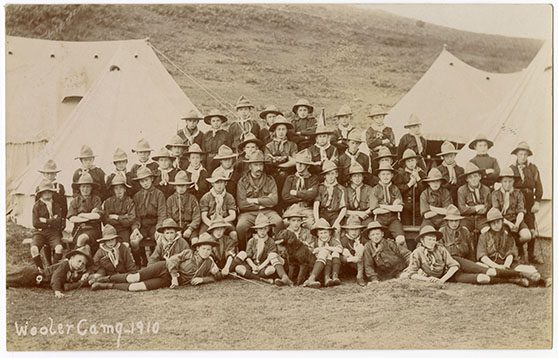
While the Sea Scouts were giving their display of life-saving, various stunts were going on by the other Scouts, including signalling, jumping, skipping, lassoing, single sticks, etc.
The Eightsome Reel by mixed units caused much hilarity amongst the spectators, as the boys were in good form. They wee accompanied by the pipes and drum.
A rather novel item was that consisting of a new type of sword dance by the 2nd Berwicks. It was good to watch, and we are sure to most it was new, making it all the more appreciable. The same Troop gave a display of games which were much enjoyed.
The campfire sing-song was another laugh-provoking item, with the Scouts all arrayed in wraps of multi-coloured materials. They arranged themselves round the fire, before which they sang “E’en gen Yama.” The Commissioner then declared the campfire open, and a selection of songs were given, S. M. Gleig being the moving spirit. Choruses, etc., were given in lusty fashion. The Commissioner and S. M. Gleig gave contributions in which the Scouts joined in. The organ accompaniments wee played by A.S.M. J. Elder.
The proceedings were brought to a close by the singing of a verse of “Abide with me.”
Votes of thanks were called for by the Commissioner for Major Kennedy, Depot K.O.S.B., for the assistance he had given, and for help received from the barracks; and also to Berwick Pipe Band for so kindly playing for them that night.
Capt. Lake, Depot K.O.S.B., kindly acted as umpire for boxing. Those in charge of collecting boxes were Mr. Parker, Counc, Thorburn, Mr. Simmen, jun., Mr. W. Howe, Mr. Hoggarth, and Miss Hogarth.
Amount received, up to going to press, is 12 5s.

